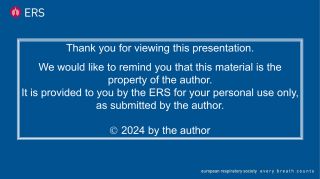12 November, 2024 | Online
17:00-18:00 CET
Chairs: Dr Stefan Unger (Edinburgh, United Kingdom), Dr Nadine Freitag (Krefeld, Germany)
Speakers: Prof. Amelia Shoemark (Dundee, United Kingdom), Dr Aran Singanayagam (London, United Kingdom)
Fees: Free for ERS members / €10 for non-members
Find out more about becoming a member
Overview
It is important to understand the role of the respiratory cilia and epithelium in host-pathogen interactions in the airways. This webinar aims to educate healthcare professionals and researchers about the evidence for the epithelial responses during chronic and severe respiratory infections, both viral and bacterial and the implication for treatment.
Educational aims
The webinar will provide details of epithelial and cilia responses in respiratory infections, including:
- Viral infections in asthma
- Severe viral infections including RSV
- Fungal infections
- Bacterial infections
The webinar will help participants to develop a better understanding of the role of respiratory cilia in host-pathogen interactions. It will also review respiratory ciliopathies and what we can learn from PCD diagnostics for children with severe and chronic respiratory infections, including secondary cilial dysfunction. Besides, the webinar will help to understand epithelial and bronchial wall changes and cytokine and interferon responses to viral infections.
Topics
1. The role of respiratory cilia in host-pathogen interactions in the airways
- Interactions of bacteria, fungi and viruses
- Secondary cilial dysfunction
2. Epithelial responses during severe viral disease
- Viral infection and asthma
- RSV and expanded ciliated cells and bronchial wall thickness
- Cytokine/interferon response
Target audience
- Paediatric respiratory consultants
- Adult respiratory consultants
- Paediatric and adult respiratory medicine trainees
- Paediatric respiratory research clinicians
- Adult respiratory research clinicians
Learning outcomes
Following this webinar, participants will be able to:
- Have an understanding of airway cilia and their response to different infections
- Have a knowledge of secondary cilial dysfunction and what we can learn from PCD diagnostics
- Have an understanding of the epithelial responses to viral infection, both in the context of chronic diseases like asthma and in severe viral infection
CME credit
An application for accreditation of this webinar has been made to the European Board for Accreditation in Pneumology (EBAP) for 1 CME credit per 1-hour attendance. If accredited, the CME credit will be granted upon attendance of at least 60 minutes during the live webinar only.
What is a webinar?
A webinar closely simulates a lecture-based teaching experience. The speaker can interact with the audience, just as in a classroom setting. During the webinar, you will be asked to share your opinion on issues related to the topic using interactive polls.
All participants will be able to hear the lecturer and see the slides throughout the presentation. As a participant you will be able to pose questions or discuss ideas with the other participants via the text chat facility and the speaker will respond to the questions via the microphone.
Login guidelines
More information will be communicated in due course.
- Please log in to the webinar 20 minutes before it is scheduled to commence. If you have any technical difficulties whilst trying to log in or during the session please contact e-learning@ersnet.org.
- Check Central European Time.
- To achieve the best quality, we recommend to avoid downloading anything from the internet during your connection to the lecture and stopping all other programmes.
- Please also ensure that your audio settings are not set to mute and adjust the volume to a comfortable level.

